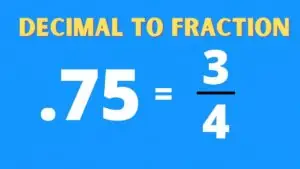In the fascinating world of mathematics, various transformations play a crucial role in understanding and analyzing shapes and figures. One such transformation is reflection, also known as a flip. Reflection allows us to create a mirror image of a given shape or figure across a line called the line of reflection. In this guide, we will explore the concept of reflection in math, its significance, and how it relates to the coordinate plane, as well as its mathematical properties.

✅ AI Essay Writer ✅ AI Detector ✅ Plagchecker ✅ Paraphraser
✅ Summarizer ✅ Citation Generator
Understanding Reflection
Reflection is one of the four fundamental types of transformations in geometry, along with translation, rotation, and dilation. It involves creating a mirror image of a shape or figure. Imagine holding an object in front of a mirror – the reflection is the image you see on the other side. Similarly, in mathematics, reflection creates a mirror image of a shape across a line.
Reflection Definition
In geometry, a reflection is commonly referred to as a flip. It involves creating a mirror image of a shape or figure across a line called the line of reflection. This line acts as a virtual mirror, where every point on the shape or figure is equidistant from the corresponding point on its reflection.
Reflection in the Coordinate Plane
To understand reflection better, let’s explore how it applies to the coordinate plane. The coordinate plane consists of two perpendicular number lines – the x-axis and the y-axis. Each point on the plane can be represented by an ordered pair (x, y), where x denotes the horizontal position (along the x-axis) and y denotes the vertical position (along the y-axis).
Reflection over X-axis
When a point is reflected over the x-axis, the x-coordinate remains the same, while the y-coordinate is transformed into its opposite sign. For example, if we have a point (2, 3) and reflect it over the x-axis, the resulting reflection would be (2, -3).
Reflection over Y-axis
When a point is reflected over the y-axis, the y-coordinate remains the same, while the x-coordinate is transformed into its opposite sign. For instance, if we have a point (4, -1) and reflect it over the y-axis, the resulting reflection would be (-4, -1).
Reflection over Y = X
Another interesting reflection occurs when a point is reflected over the line y = x. In this case, both the x-coordinate and the y-coordinate change places. For example, if we have a point (3, 5) and reflect it over the line y = x, the resulting reflection would be (5, 3).
Reflection over Y = -X
Similarly, when a point is reflected over the line y = -x, both the x-coordinate and the y-coordinate change places and are negated. For instance, if we have a point (-2, 6) and reflect it over the line y = -x, the resulting reflection would be (-6, -2).
Properties of Reflection
Reflection in math possesses several important properties that help us understand its behavior and effects on shapes and figures. Let’s explore some key properties of reflection.
- Shape and Size Preservation:
During reflection, the shape and size of the original figure are preserved. The reflected image has the same dimensions as the pre-image but faces in the opposite direction. For example, if we have a triangle ABC and its reflection A’B’C’, both triangles will have the same shape and size.
- Line of Reflection:
The line of reflection serves as the axis about which the reflection occurs. It is the line that divides the pre-image and its reflection into two symmetrical halves. Every point on the original shape is equidistant from its corresponding point on the reflected shape with respect to the line of reflection.
- Position Changes:
Reflection may also involve translation, which means the reflected image may change its position compared to the original shape. Translation occurs due to changes in the position of the line of reflection. However, the overall shape and size of the figure remain unchanged.
Applications of Reflection
Reflection plays a significant role in various fields, including mathematics, physics, computer graphics, and art. Here are a few practical applications of reflection:
- Architecture and Design:
Architects and designers often utilize reflection to create visually appealing structures and spaces. Reflection can be used to design symmetrical buildings, interiors, and landscapes, adding balance and harmony to the overall design.
- Optics and Mirrors:
In the field of optics, reflection is a fundamental phenomenon. Mirrors are designed to reflect light and create images. Understanding the principles of reflection helps in the design and development of optical devices like telescopes, microscopes, and cameras.
- Computer Graphics:
Reflection is extensively used in computer graphics to create realistic and visually stunning virtual environments. By simulating reflection, 3D artists and animators can create virtual objects and scenes that resemble real-world counterparts.
Conclusion
Reflection, or flip, is a fundamental transformation in geometry that allows us to create mirror images of shapes and figures. It is characterized by preserving the shape and size of the original figure while creating a reflection across a line of reflection. Understanding the properties and applications of reflection helps us analyze and interpret various geometric concepts and real-world phenomena. So, the next time you encounter a mirror, remember the fascinating world of reflection in math and its wide-ranging implications.
FAQ
What is the difference between a pre-image and an image in reflection?
In reflection, the pre-image refers to the original shape or figure before the reflection occurs. It is the starting point or the shape we intend to reflect. On the other hand, the image refers to the resulting shape or figure after the reflection. It is the mirror image of the pre-image formed across the line of reflection.
What are the coordinates of a reflected point across the X-axis?
When a point is reflected across the X-axis, the x-coordinate remains the same, while the y-coordinate is transformed into its opposite sign. For example, if the original point is (x, y), the reflected point across the X-axis would be (x, -y).
How does a point reflect across the Y-axis?
When a point is reflected across the Y-axis, the Y-coordinate remains the same, while the X-coordinate is transformed into its opposite sign. For instance, if the original point is (x, y), the reflected point across the Y-axis would be (-x, y).
What happens when a point is reflected across the line y = x?
When a point is reflected across the line y = x, the x-coordinate and the y-coordinate of the original point change places. For example, if the original point is (x, y), the reflected point across the line y = x would be (y, x).
What is the significance of reflecting at the origin in the coordinate plane?
Reflecting at the origin (0, 0) in the coordinate plane is significant because it creates a mirror image that preserves the shape and size of the original figure. The origin serves as a central point of reflection, and reflecting at this point does not change the dimensions or orientation of the figure. It allows us to maintain symmetry and analyze the properties of the shape or figure more easily. Additionally, reflecting at the origin is a common practice and simplifies calculations and transformations in the coordinate plane.
Follow us on Reddit for more insights and updates.





Comments (0)
Welcome to A*Help comments!
We’re all about debate and discussion at A*Help.
We value the diverse opinions of users, so you may find points of view that you don’t agree with. And that’s cool. However, there are certain things we’re not OK with: attempts to manipulate our data in any way, for example, or the posting of discriminative, offensive, hateful, or disparaging material.